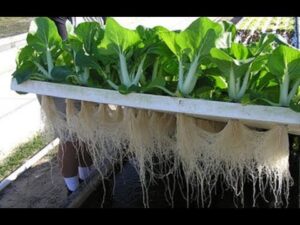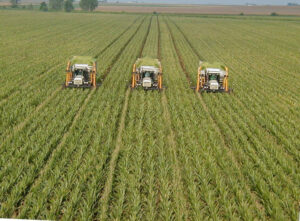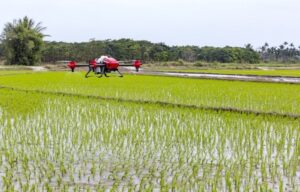
Modern Farming Methods
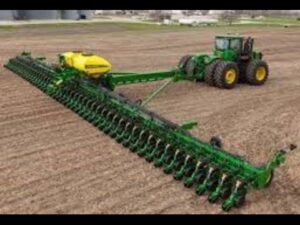 Modern farming means farming using modern techniques and technology. That means farming with the facilities of modern science and technologies. Using modern science and technologies in farming increase the farming productions. Farming is the cultivation of domestic animals, fish, birds, plants, crop etc.
Modern farming means farming using modern techniques and technology. That means farming with the facilities of modern science and technologies. Using modern science and technologies in farming increase the farming productions. Farming is the cultivation of domestic animals, fish, birds, plants, crop etc.In modern agricultural systems farmers believe they have more central roles and are eager to apply technology and information to control most components of the system, a very different view from that of traditional farmers. Modern machines can control the hard work of farmers.
Different types of modern farming methods
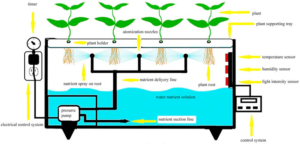 Aeroponics System of Modern Farming Methods
Aeroponics System of Modern Farming Methods
Aeroponics is the process of growing plants in an air or mist environment without the utilize of soil or an aggregate medium. The word “Aeroponic” is from the Greek meanings of aer and ponos. Aeroponics is a subset of hydroponics, and works by suspending plant roots in the air and misting them with nutrient water. This method can provide a better level of control over the amount of water that is used throughout the growing process, but may leave plant roots vulnerable to pathogens, if not carefully controlled.
Aeroponics system culture differs from conventional Hydroponics, Aquaponics, and in-vitro growing. Unlike hydroponics, this uses a liquid nutrient result as a growing medium and essential mineral to maintain plant growth; or Aquaponics which uses water and fish waste, Aeroponic is conducted without a growing medium. It is considered a type of hydroponics, since water is used in Aeroponics to transmit nutrients.
Aeroponic systems are additional cost efficient than other systems. Because of the reduced volume of solution throughput, less water and fewer nutrients are needed in the system at any given time compared to other nutrient delivery systems. The need for substrates is eliminated, as is the need for many moving parts.
Some of the benefits of using the Aeroponic farming include:
- Ease of working with plants
- Cost effective since won’t have to spend money on irrigation channels
- Aids in disease-free cultivation as plant-to-plant contact is limited and if a plant does become infected, it can be simply removed from the support structure without disrupting the other plants.
Aquaponics of Modern Farming Methods
Aquaponics, on the other hand, is a closed-loop system that relies on the symbiotic relationship among aquaculture (fish) and agriculture (plants) for fertilization. While fish waste accumulates in the water and provides the nutrients essential for plant growth, the plants naturally clean the water. It provides a balanced, yet less regimented, environment.
Aquaponics refers to any method that combines conventional aquaculture (raising aquatic animals such as snails, fish or prawns in tanks) with hydroponics (cultivating plants in water) in a symbiotic environment. In normal aquaculture, excretions from the animals raised can accumulate in the water, increasing toxicity.
An Aquaponic system depends on different live components to work effectively. The 3 main live components are plants, fish (or other aquatic creatures) and bacteria.
Benefits of Aquaponics:
- All normal fertilizer sources from fish waste.
- No reliance on mined and affected fertilizers.
- Efficient, sustainable and extremely productive.
- Fish are free of expansion hormones and antibiotics.
- Allows continuous making of food.
- It produces both a protein and vegetable crop.
- Integrated method is sustainable and earth-friendly.
- Eliminating soil eliminates soil borne diseases.
Hydroponics of Modern Farming Methods
The hydroponics method is a soil-less type of farming because it requires no soil for the plants to grow. Instead, it uses water as its growing medium. The knowledge of soil-less gardening is called hydroponics. It essentially involves growing healthy plants without the use of a traditional soil medium by using a nutrient like a mineral rich water solution instead. A plant needs, choose nutrients, some water, and sunlight to grow. Not only do plants grow without soil, they often develop a lot better with their roots in water instead.
Hydroponics farming method is a subset of hydro culture, which is a method of growing plants without soil by using mineral nutrient solutions in a water solvent. Terrestrial plants may be developed with only their roots exposed to the mineral solution, or the roots may be supported by an inert medium, such as per-lite.
The nutrients used in hydroponic farming systems can come from an array of different sources; these can include, but are not limited to, byproduct from fish waste, duck manure, or purchased chemical fertilizers.
Some benefits of Hydroponic Farming:
- By providing constant and readily available nutrition, hydroponics allows plants to rise up to 50% faster than they would in soil. Also, fresh produce can be harvested from a hydroponic garden through the year.
- Great for both the environment and the mature product, hydroponic gardening virtually eliminates the need for herbicides and pesticides compared to traditional soil gardening.
- Any water that is used hydroponic farm gardening stays in the system and can be reused, reducing the constant need for a fresh water supply.
- Arable land is often in small supply and gardening space continues to decrease. A huge option when you lack yard space or have a tiny balcony, hydroponics also lends itself really well to indoor gardening.
Monoculture of Modern Farming Methods
Monoculture farming method is the raising of a single crop within a specified area. Most of the commercial farms in the United States are now monoculture in nature, with crops like corn and soy taking top billing. This is in contrast to the traditional technique of farming, which relied on multiple crops being planted within a specific area. Many indoor farms growing medicinal herbs and flowers are measured to be monoculture farms.
Monoculture is the agricultural practice of producing a single crop, single plant, or livestock species, variety, or breed in a field or farming system at a time. Polyculture, where more than one crop is grown in the similar space at the same time, is the alternative to monoculture. Monoculture farming is widely used in both industrial farming and organic farming and has allowed increased efficiency in planting and harvest.
When one crop is grown alone in a field, it is called a monoculture farm. Monoculture farming makes it easier to cultivate, sow seed, control weeds, and harvest, as well as expand the size of the farm operation and improve aspects of profitability and cost. At the same time, monocultures tend to promote the use of the other 5 basic practices of modern agriculture.
Monocultures in grassland are a moderately recent phenomenon. Many grassland systems, such as hay meadows and chalk grasslands, have a more diversified. In case of chalk grasslands, this diversity has arisen following several years of grazing.
Advantages of monoculture:
- Reduced plant opposition for nutrients, space and solar radiation.
- Control of undesirable or unprofitable organisms.
- Reduction of costs by controlling of specialized machinery required for arable operations.
- Maximize profit from the increasing of higher gross margin crops.
Tissue culture of Modern Farming Methods
Tissue culture refers to a method in which fragments of a tissue plant are introduced into a new, artificial environment, where they continue to function or grow. While fragments of a tissue culture are often used, it is important to note that entire organs are also used for tissue culture purposes. Here, such growth media as broth and agar are used to facilitate the procedure. While the term tissue culture farm may be used for both plant and animal tissues, plant tissue culture is the more specific term used for the culture of plant tissues in tissue culture.
Tissue culture is the expansion of tissues or cells separate from the organism. This is naturally facilitated via the use of a liquid, semi-solid, or solid growth medium, such as broth or agar. Tissue culture normally refers to the culture of animal cells and tissues, with the more specific term plant tissue culture being used for plants.
Tissue culture usually refers to the growth of cells from a tissue from a multicellular organism in vitro. These cells may be isolated from a donor organism, “primary cells”, or an immortalized cell line. The cells are bathed in a culture medium, which contains necessary nutrients and energy sources necessary for the cells’ survival. The tissue culture is often used interchangeably with cell culture.
Use of Tissue Culture technique:
The tissue culture technique is used increasingly for the production of ornamental plants like orchids, dahlia, carnation, chrysanthemum, etc. The assembly of plants by the method of tissue culture is also known as micro propagation because small amounts of plant material is used.
Advantages of Tissue Culture:
- Tissue culture is a fast technique. Thousands of plantlets can be created in a few weeks time from a small amount of plant tissue.
- The new plants formed by tissue culture are disease free.
- Tissue culture can produce, plants round the year, irrespective of weather or season.
- Very little space is needed for increasing new plants by tissue culture.
- It helps to speed up the creation of new varieties into the market place.
Drones in Modern Farming Methods
An agricultural drone technology is an unmanned aerial vehicle applied to farming in order to help increase crop production and monitor crop growth. Sensors and digital capabilities can give farmers a richer picture of their fields. This information may prove useful in civilizing crop yields and farm efficiency.
Drone technology has been around for decades, taking to the skies to capture movie sequences, collect scientific information and scout territory. But there’s a different industry where drones are really beginning to take off farming.
Agriculture is on tap to make up eighty percent of the market for unmanned aircraft in the next couple of decades. With the invention of newer, more effective technologies, drones in agriculture have the potential to launch the agriculture industry into a future of sustainability.
- More information, less time: One of the main benefits of drones is their ability to scout farm fields both quickly and efficiently. Rather than having growers evaluate field’s manually on foot or by tractor, this knowledge allows farmers to gain immediate knowledge about the status of their fields in shorter periods of time.
- Improving crop health and efficiency: Drone technology is very effective at collecting data to help farmers improve crop health. Equipped with sensors, drones flying over a field can collect plant height dimensions by gathering range information from the plant canopy and the ground below. By measuring near infrared wavelengths through a multispectral sensor, drone technology can also create vegetation index images, indicating which plants are healthy and absorbing maximum sunlight.
- Water efficiency and other environmental benefits: Thermal cameras are capable to detect cooler, well-watered field regions as well as dry hot patches. Farmers can utilize this data to adjust field irrigation and avoid wasting excess water. This capacity to increase water optimization is particularly valuable in drought-stricken areas, such as California. Most drones presently available for use in the agriculture industry are very costly. However, with new developments and more innovation, drones may start to prove their value in agriculture.
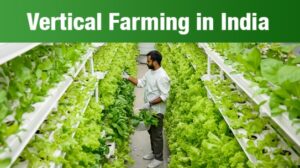 Vertical Farming
Vertical Farming
Vertical farming is the urban farming of fruits, vegetables, and grains, within a building in a city or urban center, in which floors are designed to accommodate certain crops. These heights will act as the future farms, land and as architects; we can figure these high-rises to sow the seeds for the future.
Vertical farming is, growing food indoors, in vertical layers; a concept global company has been experimenting with over the past 10 years filling old warehouses and disused factories with structures that develop vegetables and herbs in cramped, artificially lit quarters out of the warm glow of the sun.
Vertical farming is producing food and medicine in vertically stacked layers, vertically inclined surfaces and integrated into other structures. The ideas of vertical farming use indoor farming techniques and controlled-environment agriculture (CEA) technology, where all environmental factors can be controlled. These facilities develop artificial control of light, environmental control and fertigation.
Vertical farming has several advantages such as that it allows maximum crop yields. This means that vertical farming can permit crops to be grown at all times throughout the year, as it is not weather dependent. It can also be grown throughout the complete day and night as it uses L.E.D. lights since photosynthesis can occur at all times. One more advantage is that it reduces transportation costs as it will be cheaper for transportation since you can build vertical farms in cities, so you don’t need to import the crops from other regions. Vertical farming also grows food organically since no pesticides will be required as there are no pests to damage the crops. So it is healthier, safer and more eco-friendly. Finally the price is also another advantage of vertical farming. At the start vertical farming may be very costly, but after the first few years, it will become a cheaper form of farming. Also the price for the plants grown in vertical farms will also decrease.
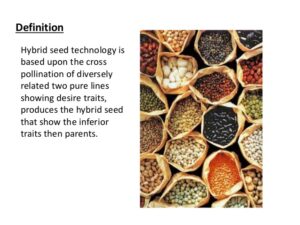 Hybrid Seed Technology
Hybrid Seed Technology
A hybrid seed technology is a cross between two or more unrelated inbred plants. The two dissimilar varieties are cross bred, resulting in a seed that carries one or more favorable traits. Hybrid seeds are commonplace in commercial farming, mainly to increase crop yields. In agriculture and gardening, hybrid seed is used to form by cross-pollinated plants. Hybrid seed production is major in modern agriculture and home gardening.
All of the hybrid seeds planted by the farmer will construct similar plants, while the seeds of the next generation from those hybrids will not consistently have the desired characteristics. Controlled hybrids provide very regular characteristics because they are produced by crossing two inbred strains.
Hybrids are chosen to develop the characteristics of the resulting plants, such as better yield, greater uniformity, improved color, disease resistance. A main factor is the heterosis or combining ability of the parent plants. Crossing any exacting pair of inbred strains may or may not result in superior offspring. The parent strains used are therefore suspiciously chosen so as to achieve the uniformity that comes from the uniformity of the parents, and the superior performance that comes from heterosis.
The most common advantages are:
- Additional vigorous plants
- Enhanced disease resistance
- Improved crop yields
- Increased taste of fruits and vegetable.
Conclusion of Modern Farming Methods:
These are useful for future food production.
Financial and Business expert having 30+ Years of vast experience in running successful businesses and managing finance.
